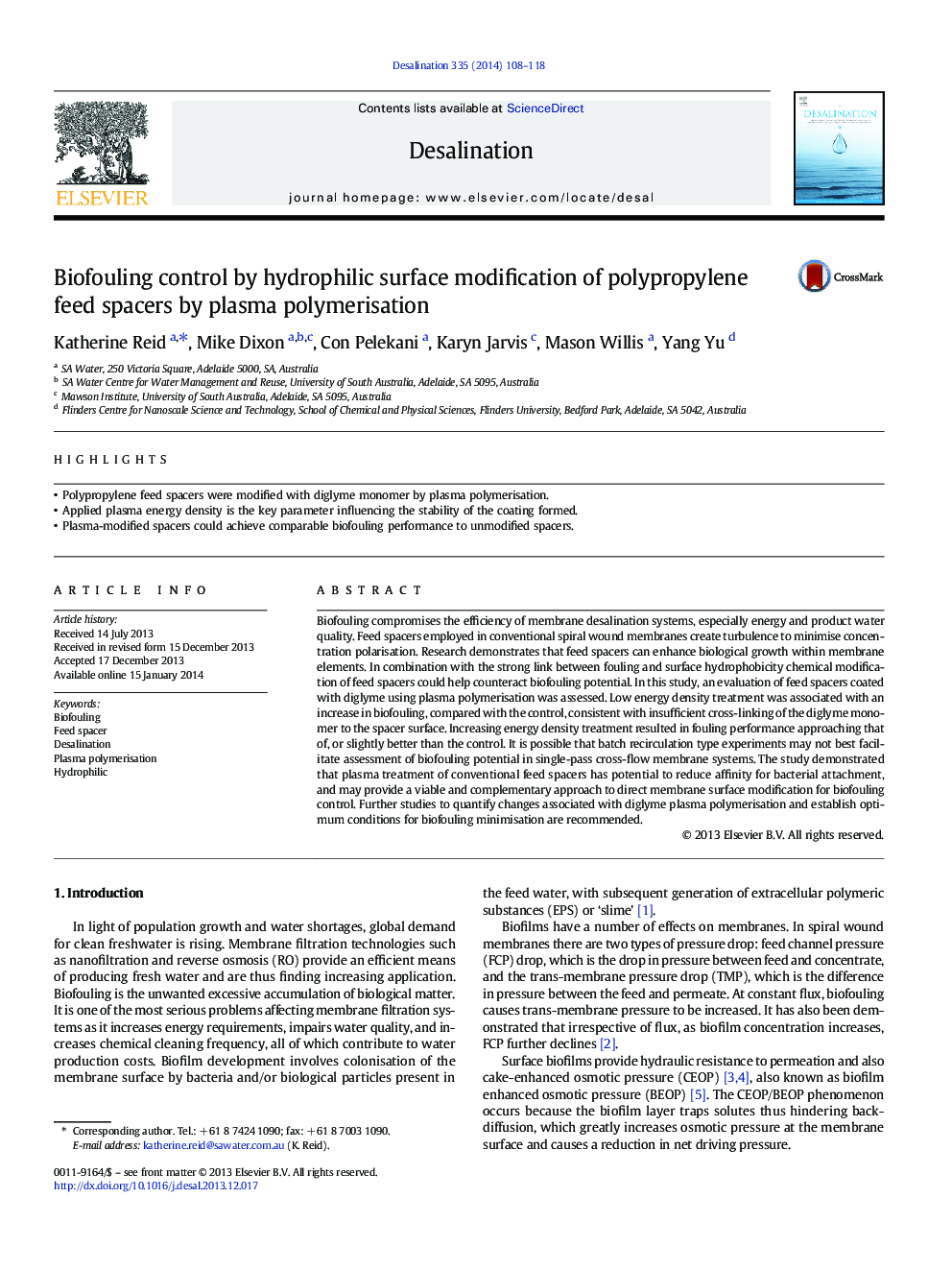| Article ID | Journal | Published Year | Pages | File Type |
|---|---|---|---|---|
| 623697 | Desalination | 2014 | 11 Pages |
•Polypropylene feed spacers were modified with diglyme monomer by plasma polymerisation.•Applied plasma energy density is the key parameter influencing the stability of the coating formed.•Plasma-modified spacers could achieve comparable biofouling performance to unmodified spacers.
Biofouling compromises the efficiency of membrane desalination systems, especially energy and product water quality. Feed spacers employed in conventional spiral wound membranes create turbulence to minimise concentration polarisation. Research demonstrates that feed spacers can enhance biological growth within membrane elements. In combination with the strong link between fouling and surface hydrophobicity chemical modification of feed spacers could help counteract biofouling potential. In this study, an evaluation of feed spacers coated with diglyme using plasma polymerisation was assessed. Low energy density treatment was associated with an increase in biofouling, compared with the control, consistent with insufficient cross-linking of the diglyme monomer to the spacer surface. Increasing energy density treatment resulted in fouling performance approaching that of, or slightly better than the control. It is possible that batch recirculation type experiments may not best facilitate assessment of biofouling potential in single-pass cross-flow membrane systems. The study demonstrated that plasma treatment of conventional feed spacers has potential to reduce affinity for bacterial attachment, and may provide a viable and complementary approach to direct membrane surface modification for biofouling control. Further studies to quantify changes associated with diglyme plasma polymerisation and establish optimum conditions for biofouling minimisation are recommended.
